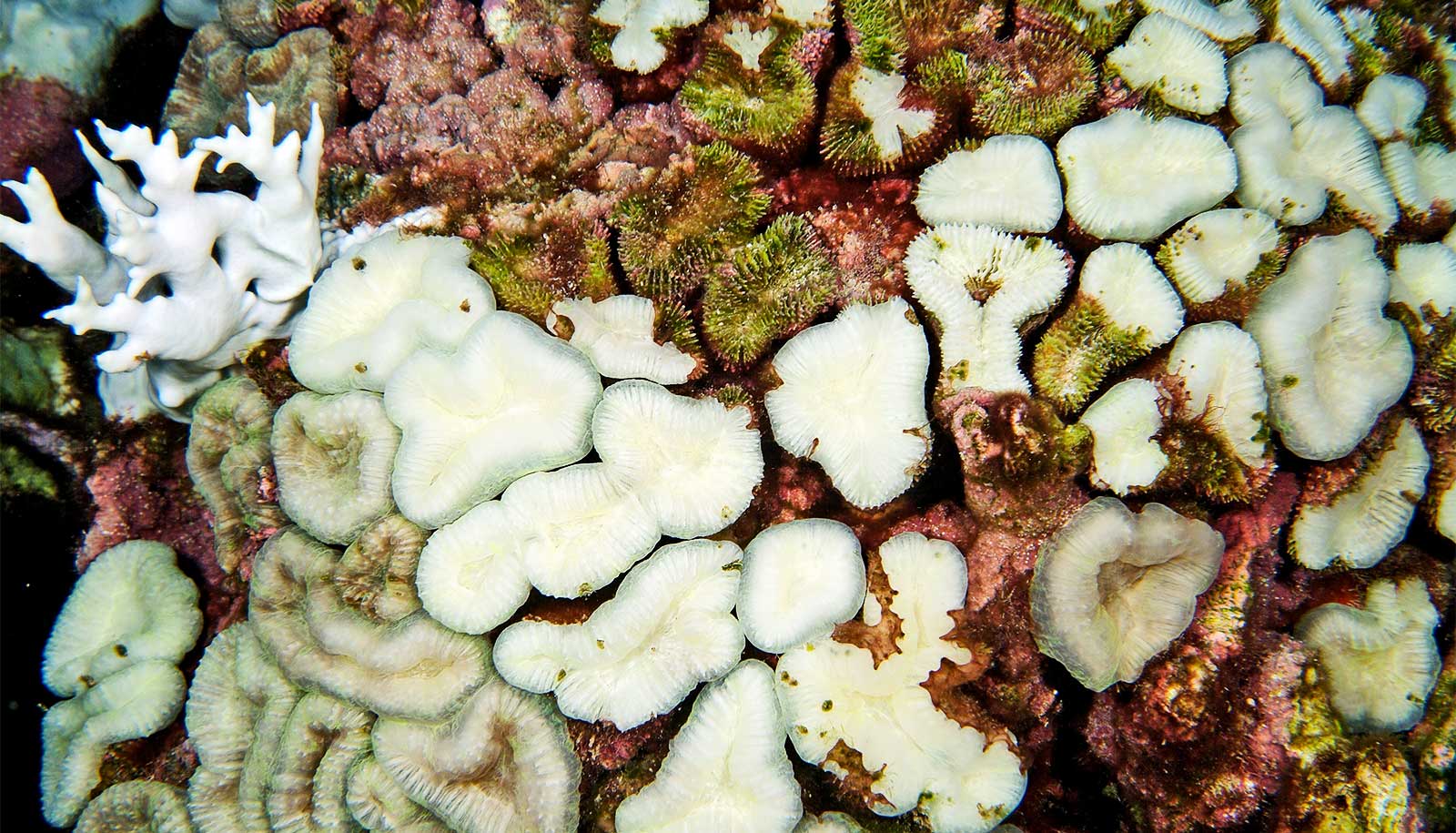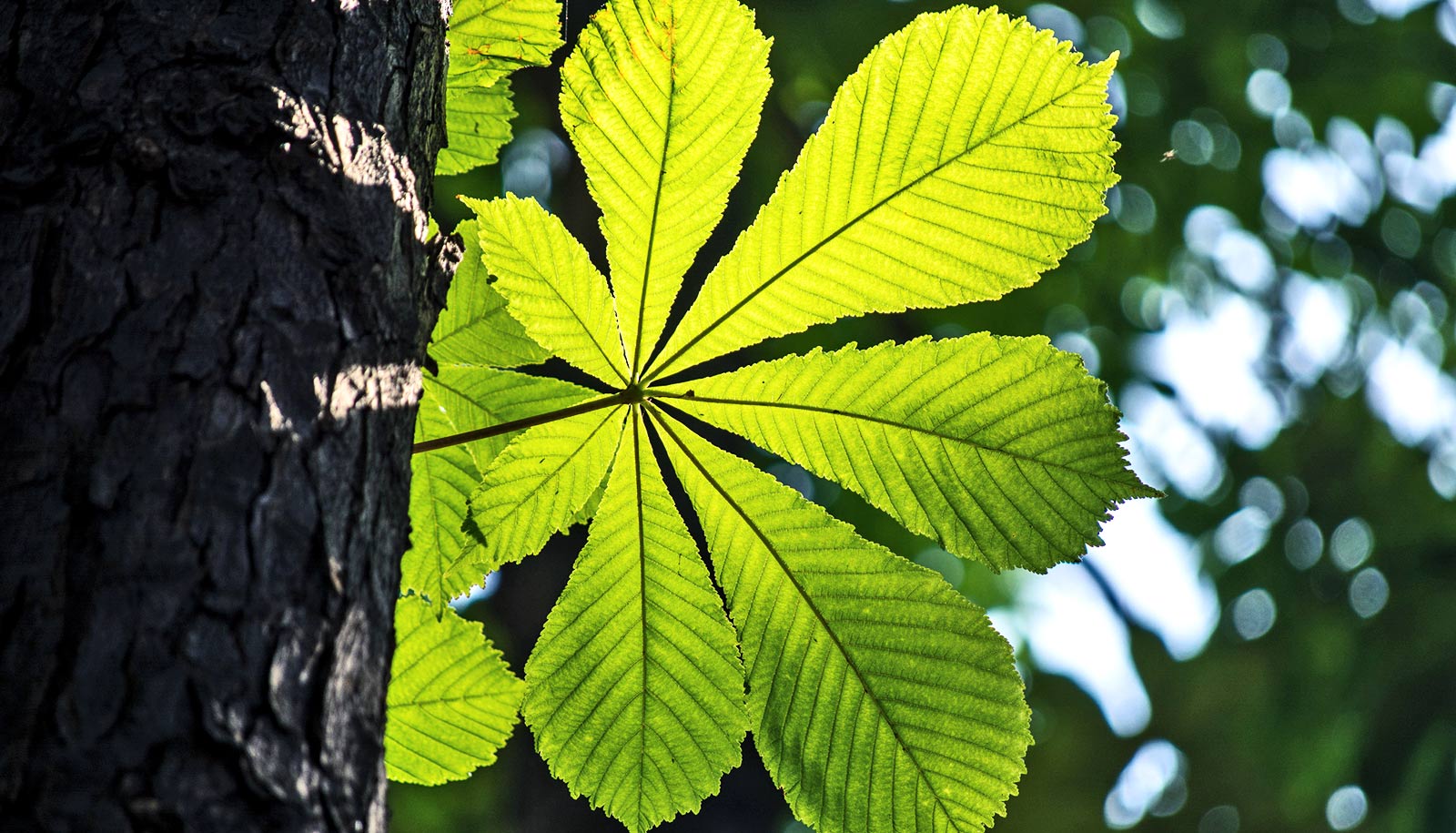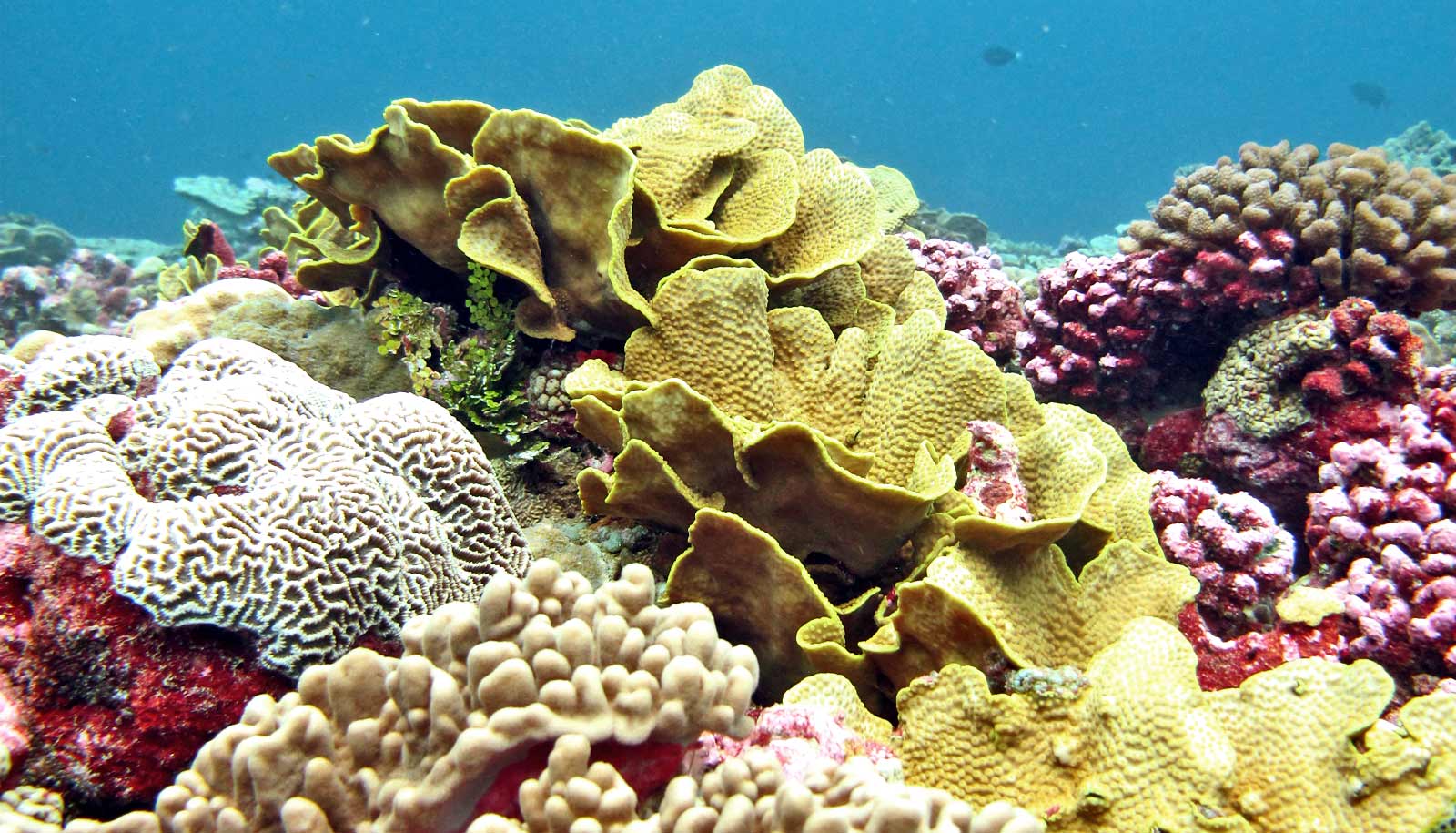Researchers may have solved the mystery of what caused the death of the large and colorful reefs about 100 miles from the Galveston coast 3 years ago.
Considered some of the healthiest coral reefs remaining in the Caribbean and Gulf of Mexico, the large and colorful reefs at the Flower Garden Banks National Marine Sanctuary grow on top of shallow, submerged banks in otherwise deep water.
As reported in Coral Reefs, researchers found that two separate processes caused hypoxia on the reef, leading to the die-off: the transport of freshwater runoff from the Mississippi, Atchafalaya, and Brazos Rivers, and an upwelling of deep, dense water onto the reef.
“We believe the combination of two different processes—river runoff and upwelling—caused localized hypoxia that killed invertebrates on the reef,” says Katie Shamberger, a researcher in the oceanography department at Texas A&M University. “In other words, both processes happened simultaneously to cause hypoxia and one of them alone may not have caused any trouble.”
Blocked sunlight
The first process, river runoff that flowed offshore, was most likely water from the Mississippi-Atchafalaya Rivers, but about one-fifth of the water was from Texas rivers, Shamberger says.
These waters made it out to the Flower Garden Banks as a thin, low salinity surface layer. Since it was on the surface, the low salinity water probably didn’t touch the Flower Garden Banks reefs, which are about 60 feet deep, but the runoff was turbid and blocked sunlight from the reef.
“Blocking light from the reef reduces photosynthesis, and we think this resulted in there being more respiration than photosynthesis by reef organisms. As a result, oxygen on the reef was being used up faster than it was being produced,” Shamberger says.
“This would be no big deal if the water on the reef mixed with surrounding water with normal oxygen levels to replace the oxygen being used up by reef organisms. But we think a second process, called upwelling, helped prevent mixing.”
Death to coral reefs
When upwelling occurred, Shamberger says, deeper and denser water settled into pockets on the reef. This presented mixing and allowed respiration to use up oxygen in the bottom layer, causing the death of reef organisms that couldn’t swim away from the hypoxic water.
“All of this could have happened very quickly—within 48 hours,” Shamberger says.
The die-off only affected about 3% of the reef, but some of these areas experienced almost 80% mortality, she says, and those areas have still not recovered. Some of the marine life most affected included corals, sponges, urchins, and sea stars.
“While we know that river runoff makes it out to the Flower Garden Banks periodically, and that there is evidence that upwelling at East Bank also occurs, we do not know how often these processes happen simultaneously or how likely it is that they will occur together to cause hypoxia on the coral reefs in the future,” Shamberger says.
“We do know that there is cause for great concern because human-caused climate change and ocean warming are generally making ocean hypoxia worse.”
Global effort needed
The research team went to the site to collect data five days after the discovery of the die-off event. Shamberger says it was an “incredibly quick” turnaround time to mobilize such a research cruise.
The Flower Garden Banks and other NOAA national marine sanctuaries are special places that “hold remarkable diversity and beauty, cultural and historical significance, and economic opportunity,” says Andrea Kealoha, now at the University of Hawaii Maui College.
However, the event shows that the areas are still subject to environmental and climate change stressors that local management can’t control, Kealoha says, adding that national and global efforts need to manage them.
“Hypoxia in coral reefs is an emerging stressor that is gaining more attention, Kealoha says. “Yet, it is very difficult to measure hypoxia because many reefs, like the Flower Garden Banks, are isolated. By the time anyone can figure out what’s happening, it’s often too late.”
Instruments on the reef continuously measuring ocean conditions could help us understand the stresses coral reefs are under and how they respond to human-caused environmental changes, the authors write.
The NOAA Flower Garden Banks National Marine Sanctuary, NOAA Office of National Marine Sanctuaries, Gulf of Mexico Coastal Ocean Observing System, the College of Geosciences, the Department of Oceanography, the Geochemical and Environmental Research Group, the Harte Research Institute, the Texas General Land Office, the Texas OneGulf Center of Excellence, the GoM Research Initiative to support the Aggregation and Degradation of Dispersants and Oil by Microbial Exopolymers (ADDOMEx) consortium, and NOAA Nancy Foster Scholarship funded the work.
Source: Texas A&M University



